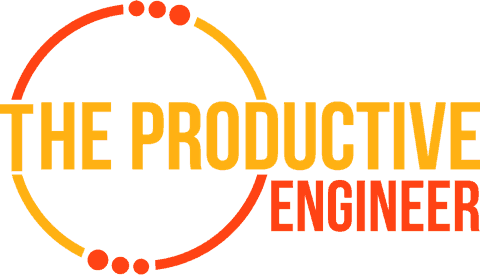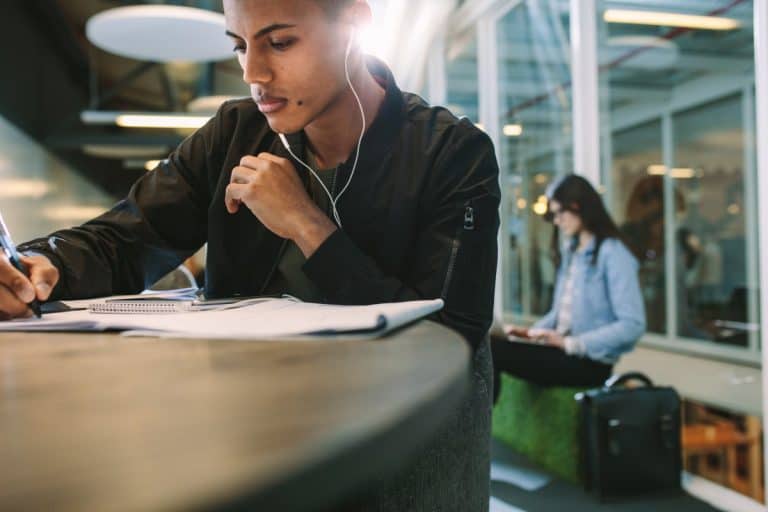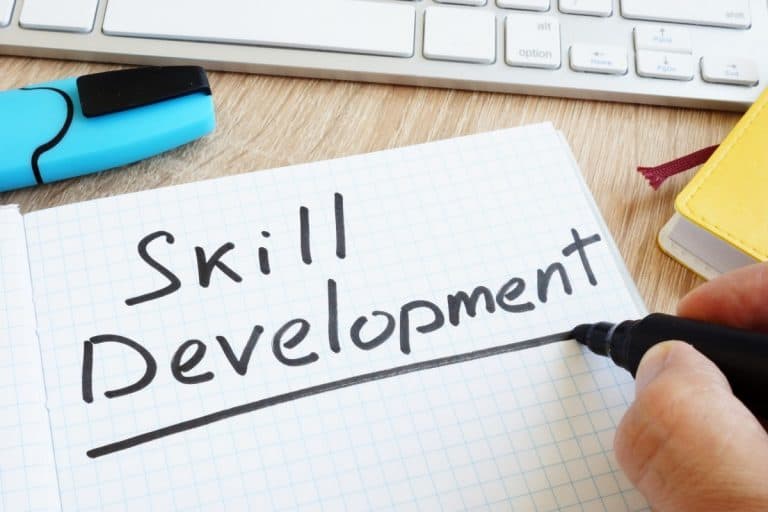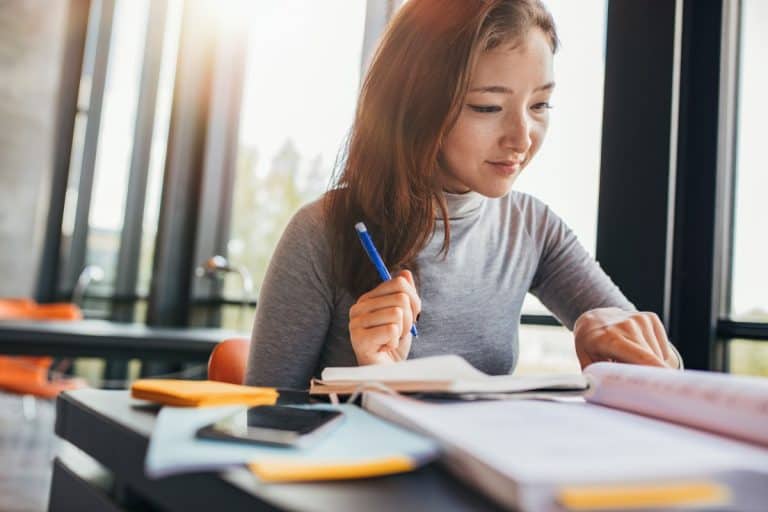How to Study Last Minute for a Test Effectively
Hello procrastinators, and those of you who have a legitimate reason for being a procrastinator. Well, regardless of how you got to the last possible minute to study without having studied, it happened. Suddenly there is a test coming up, and you have not “had the time” to prepare appropriately for your test. I get it; I do because I too am a procrastinator. So I will share some of my long-standing practices with you on how to get yourself as prepared as possible for your exam.

Honestly, I have been a procrastinator my whole life, so I am no stranger to pushing my deadlines. Here is my 6-step plan on how to study last minute for a test:
- Get ready to study
- Change your environment
- Be unavailable
- Pomodoro Technique
- Study
- Review subject
- Get sleep
Honestly, this guide is really an “in case of emergency, break glass” type of guide. We all know we should prepare gradually and consistently over a reasonable amount of time. However, we all have been in the situation where for whatever reason (no judgments), we simply need to cram at the last minute. That is what this guide is for, to help you get through this as efficiently and effectively as possible.
Speaking of studying, if you are looking for more study tips, check out our article on 25 awesome study tips that can make your study time more effective at the link below:
25 Study Tips for Improved Academic Performance
Before we get started, if you are looking to improve your writing, you should really check out Grammarly. Grammarly is a godsend for those who have to write term papers, dissertations, or anything else you write that needs to be grammatically correct. Grammarly doesn’t just check grammar either. It helps you to write clearly and effectively by checking for overused words and unclear phrases. Best of all, Grammarly has a great free tier to get started with. For more information on Grammarly, click the link below:
Grammarly – Great Writing, Simplified
If you are looking for the best study tools out there, you should read our article on the best study tools to enhance your studying at the link below:
The Ultimate Study Tools You Must Use to Succeed!
Six Steps To Maximize Studying at the Last Minute
Without further delay, let’s take a quick deep-dive and get you on your way to a successful test.
Step #1: Get ready to study
No, not in your comfy pajamas. If you’re dressed for relaxing, you might find yourself relaxing and unfortunately you don’t have time to kick back. As more and more people start to work from home as I do, we hear people tell us all the time to get up and get dressed like we are going to an office environment, and I have to say, it does make a difference. When it is time to put in work, you must dress for the occasion. And since we are trying to get the most productivity out of our time right now, get ready to put on your grown-up clothes and get at it. Don’t forget to grab all of your stuff and pack up your backpack. Socks and shoes, too, since next, we are leaving the house.
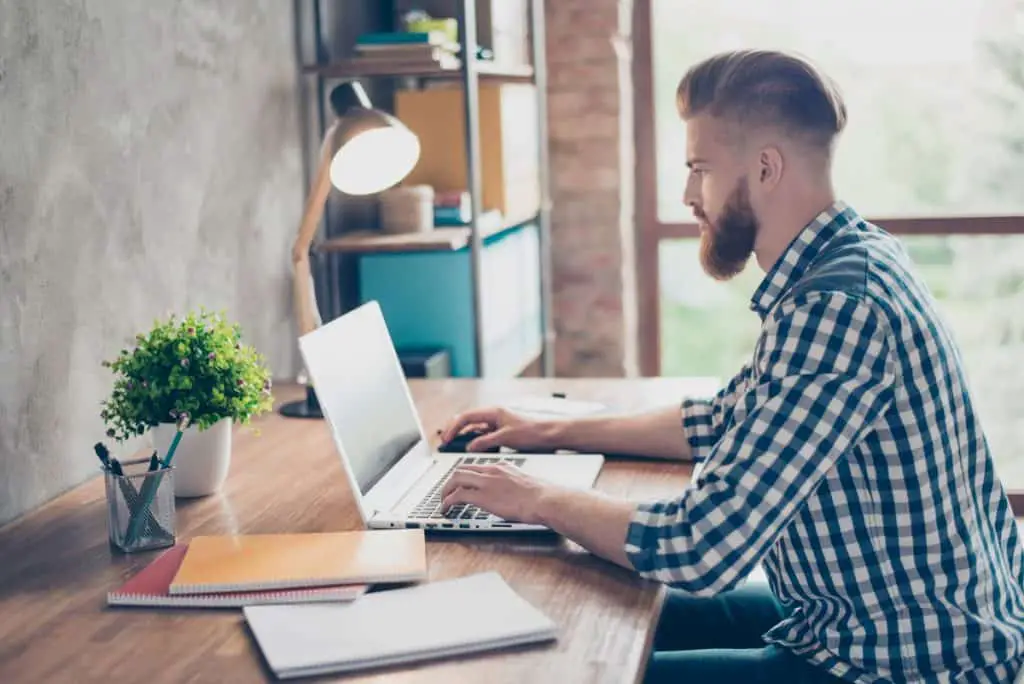
You should also have all of your study materials with you and ready to go. There is simply no time to forget things you need to prepare. Ensure you have taken inventory and are fully confident you have everything you need for your mammoth exam preparation session. Not sure what you should have at your session? Worry not as I have included a table containing some of the items I typically have at the ready when studying:
Key Items You Need to Have While Studying
| Study Item | Why It’s Valuable to Have | Amazon Link |
| Flashcards | Great for memorization and question/answer sessions | Link to Flashcards on Amazon |
| Notebook | Taking Notes, review. Choice of traditional notebook or digital-friendly. For traditional notebooks, I really like Moleskine notebooks. If I want to write in a physical notebook and later digitize it, I recommend Rocketbook. If prefer using iPad as notebook with Apple Pencil, I recommend using either the Notability or GoodNotes app. | Link to Moleskine Notebook on Amazon Link to Rocketbook Notebook on Amazon |
| Notebook Tabs | Tabs are great for helping you quickly find content | Link to Notebook Tabs on Amazon |
| Highlighters | Highlighters are mandatory items for any study session as they allow you to provide focus to the key salient points and concepts within text. | Link to Highlighters on Amazon |
| Pencils | Any studying that involves drawing diagrams or creating any content that might need to be edited should be written in pencil. | Link to Pencils on Amazon |
| Pens | Generally, I take my notes in pen. I personally like to use different color inks to denote different aspects of the content to make studying and finding what I am looking for easier. | Link to Pens on Amazon |
| Food/Snacks | We all get the munchies when studying. You need to keep yourself fueled up to have the energy to power through and get the work done. Almonds and dark chocolate are great options for studying. I actually have a list of great foods you should eat while studying in this blog post. | Link to Almonds on Amazon Link to Dark Chocolate on Amazon Link to Air-popped Popcorn on Amazon Link to Trail Mix on Amazon |
| Water | Water is a requirement. You must stay hydrated. Many people load up on caffeine when studying but caffeinated drinks can dehydrate you. I recommend having a reusable water bottle that you take with you everywhere. I have a HydroFlask water bottle and it does a great job keeping my water cool. | Link to HydroFlask on Amazon |
| Noise Canceling Headphones | If you are not studying in a quiet area (like a lonely corner of a library), you really need to block out the outside world. Bose makes the best noise- canceling headphones in my opinion. | Link to Bose Noise-canceling Headphones on Amazon |
| Scissors and Tape | Occaisonally, you will find yourself cutting and taping things while you are studying. Better to have and not need than need and not have. | Link to Scissors on Amazon Link to Tape on Amazon |
Step #2: Change Your Environment
Get out of the house! In the same way, you shouldn’t wear pajamas to study; you shouldn’t sit on your living room couch either. I know, I know, its almost 2020, and you can do nearly anything from the comfort of your bed, but it will be so much easier to change your mindset if you change your environment. Step one was to get ready, and now it is time to go.

Honestly, my hometown library was a great place to study. There is a little, inside room with maybe one other “serious studier, some artwork, and a cubicle style desk like an island in the middle of the room. The area is super quiet, minimal view, and a desk with blockers on three sides; this is the perfect environment for me. If you don’t already have a spot in mind, check out your local library. The key aspect of wherever you choose to study is that it is quiet, secluded and distraction-free. It is easy for your mind to wander when there is activity around you. Studying can turn into people-watching very quickly and you are on a tight schedule.
Step #3: Be Unavailable
It is no secret that our phones are a huge distraction. Not only do you have texts and calls, but you also have all of the various social media services out there competing to capture our precious attention. Since I highly doubt you reached out to all of your friends and family to tell them not to text you and turned off all of your social media notification, it’s just easier to put your phone on airplane mode. Sometimes, I even leave my phone at home or in the car.
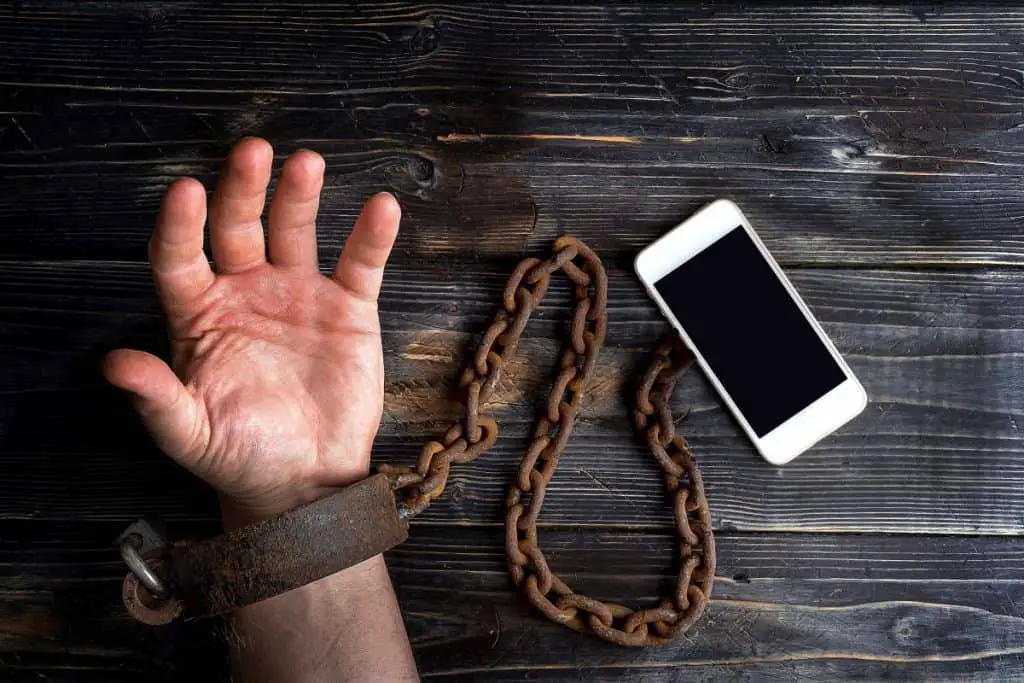
The whole fact that you are in last-minute study mode in the first place is because you, in some form or fashion you have been distracted from school for far too long, so its time to change your mindset and switch your phone to airplane mode. Plus, it will only be for a few hours. I have never regretted not using my phone to study. However, I have regretted not studying as much due to phone usage. The ability to experience the joy of deferred gratification in getting your studying completed is awesome. It is certainly stronger than the small, pavlov-like feeling you get by picking up your phone to check the latest meaningless tweets and inane YouTube or TikTok video (unless you are watching my YouTube videos, in which case carry on).
Step #4: Pomodoro Technique
The Pomodoro Technique was developed specifically to improve your productivity. It is a little confusing, so let me break it down. You set a timer for 25 minutes and focus on your task, like for real, laser focus, no distractions. When the timer goes off, take a short break, between 3-5 minutes. I use this time to walk over to the artwork at my library and read the little plaque about it. After you do that three times, when the timer goes off for the fourth time, take a more extended break like 15-30 minutes. The longer break is perfect for grabbing a snack and checking your phone real quick if you genuinely need to. Just don’t lose track of time on your breaks.
If you are interested in learning more about the Pomodoro Technique and how it might help you get your work done, check out my blog post at the link below:
Link to Pomodoro Technique article
Step #5: Study
If at all possible, skip the textbook. Hopefully, you have already read the chapters you needed, too, and have been taking notes during a lecture or have material from your teacher that you can study. If not, you need to do some speed reading. But before we get into that, I want to mention that usually, I would say make sure you have a snack and some water nearby, but at this point, you should focus for those 25 minutes at a time and eat during your breaks.

I had a teacher in high school who told me that if I ever needed to read a chapter fast, I should go through and read the first and last sentence of every paragraph and any sentence that contains a bolded word. I will add that since we are trying to study, you should be making flashcards throughout this process. So make a note and short description of any names, dates, formulas, etc. this way you now have easy reference and study material.
The best thing to study is teacher-provided material. If the teacher made time to create a slide show or handout or anything, trust me when I say: it must be essential, and you will likely see it on the test. Secondly, your notes on the book and lectures are excellent study material because you have already captured the main points and now you need to study over it a few times.
Step #6: Review, Review, Review…
This next part is arguably the most important. The best way to learn a subject is to interact with it. What I mean by that is anything that gets you thinking about it. I usually have questions by the end of the lecture anyways, so I google and youtube until I have a good understanding of the subject. You could find a documentary, or talk to a classmate about it but since we are cramming here, you really should eat, sleep and breath the test subject. If you are watching something, it should be related; if you want to listen to something, find a podcast about it; if you are scrolling, type it in google and scroll through that.

If you do all of these things consistently, you should be able to pass your test.
Step #6: Get Sleep
By now, you should be feeling pretty prepared, and the best thing you can do is get some sleep. You heard it all through high school, and it’s very accurate, you need to be well-rested when taking a test. Just trust the advice and make sure you get at least six hours of sleep. You can do more study and review before the test on the day of the test, but the night before is time for rest.
Additional Suggestions to Enhance Your Last Minute Studying
The six steps provided in this article are a great starting point for maximizing your time when cramming for a test. However, there are some other things you can do to enhance the studying experience:
Music
This one is a bit controversial as some people swear by studying with music while others view it as a mental distraction. I personally love adding music to my workflow as it helps motivate me and keep me going. It also, at least for me, has the benefit of keying the concepts I am trying to learn with the music I am listening to which, again for me, helps with recall. I would typically recommend either lyric-less music or music you have heard a million times before as they are less likely to add mental load.

If you are having trouble finding good music to study to, I have included some studying playlists from Apple Music and Spotify respectively in the table below:
Great Music Playlists for Studying
| Streaming Service | Playlist Name | Link To Playlist |
| Apple Music | Brain Fuel: Music for Studying | Link to Brain Fuel Playlist |
| Apple Music | Pure Focus | Link to Pure Focus Playlist |
| Apple Music | Study Beats | Link to Study Beats Playlist |
| Apple Music | Studying | Link to Studying Playlist |
| Spotify | Allnighter | Link to Allnighter Playlist |
| Spotify | Intense Studying | Link to Intense Studying Playlist |
| Spotify | Soundtrack for Studying | Link to Soundtrack for Studying Playlist |
| Spotify | Studying Music | Link to Studying Music Playlist |
Music can be an awesome tool to use when studying but your mileage may vary. I would recommend trying it to see if it feels right (note: don’t try this for the first time the night before your exam). If it works for you, music can really make studying less burdensome.
Study Groups – Study with Others
Study Groups are great for several reasons. They provide a sounding board for working through the concepts and material you are trying to learn. They can also help fill in some of the gaps in your notes and materials as well as providing a different point of view or insight that can help you learn the material on a deeper level. Study groups also help cut down the amount of time needed to learn (assuming you are in a good study group where everyone in it pulls their own weight).

Depending on how much (or how little) preparation you have done prior to the last couple of days before the exam, study groups may or may not make sense. If you literally haven’t done anything toward preparation, you really shouldn’t join a study group as you will just be an anchor to the group. If, however, you have done some of the work and are looking to fill in the blanks, joining and participating in a study group can really turbo-charge your study session.
Use a Good Note-taking System that Facilitates Self-Testing
As discussed earlier, engaging with the content is essential to learning the material. Passively taking notes that are just parroting the professor’s words onto the page is not engagement, it is mindless transcription. You need to take notes actively. This means taking notes while processing what you are hearing and putting the content into your own words. This can include creating your own analogies and models to represent the content you are trying to learn.
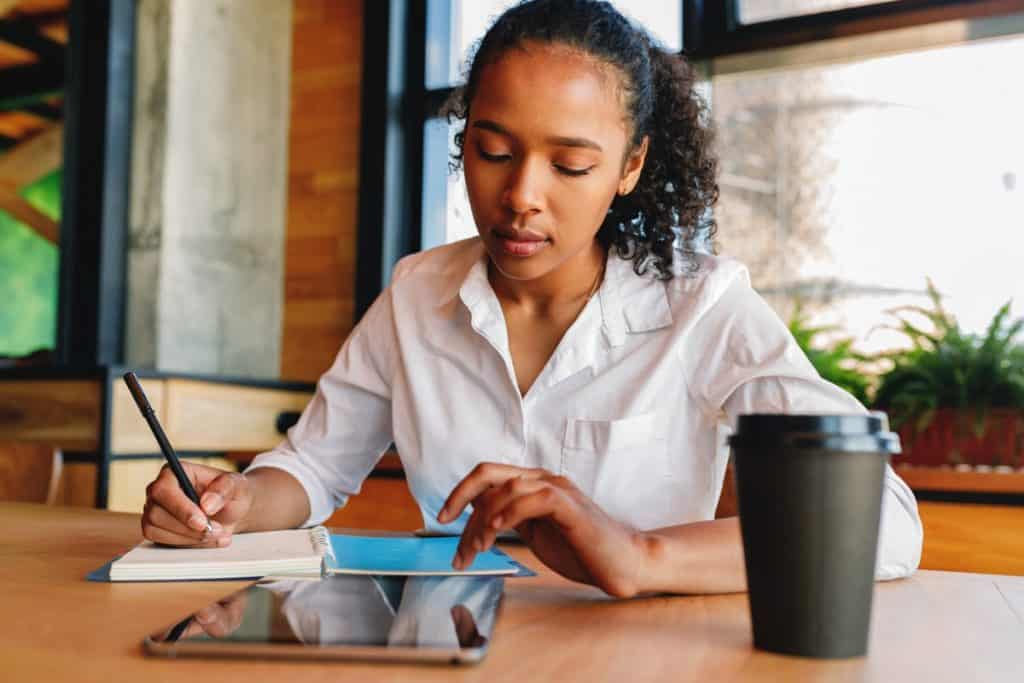
Part of taking notes is doing so in a way that helps facilitate self-testing. There are several note-taking methods out there but the one I use and recommend is the Cornell note-taking method. This method provides a way to structure your note-taking page such that you have dedicated sections for summarizing and creating your own questions on the notes. For more information on the Cornell Note-Taking Method, check out the blog post at the link below:
Link to How to Use the Cornell Note-Taking Method article
While the Cornell method is a great note-taking system to use, it is far from the only method available. Some other methods include:
- The Outline Method
- The Boxing Method
- The Charting Method
- The Mapping Method
Goodnotes actually wrote a great blog post describing each of these methods. It is also important to note that you can use more than one method depending on the type of content you are capturing.
Use Mnemonics to Learn Key Concepts
Some people learn better using audible or vocal cues than written ones. For these types of people, the use of mnemonic devices can be helpful. In simple terms, mnemonic devices are essentially about creating a word or phrase based on word association. It works best with lists of items that you need to remember in a sequence. One example would be when attempting to learn PEMDAS order of precedence would be shown in the table below:
Example of a Mnemonic Device
| Mnemonic Device | Concept Being Learning |
| Please Excuse My Dear Aunt Sally | Parenthesis, Exponent, Multiplication, Division, Addition, Subtraction |
As you can see in the table above, the mnemonic phrase Please Excuse My Dear Aunt Sally contains the same first letter of each word in the phrase as the PEMDAS order of precedence Parenthesis, Exponent, Multiplication, Division, Addition, Subtraction. While this type of learning technique doesn’t work for all scenarios, it can be a lifesaver if you are trying to learn quickly (like when you wait until the last minute to study).
Eat Healthy, Brain-Boosting Foods, and Beverages
If you have energy when trying to study, you really are fighting an uphill battle. It is natural to want to go the high caffeine, fast-food route for convenience but you need to be careful. Caffeine can help you with your study in moderation but can quickly become a detractor if overconsumed. For more information on how caffeine should be used as part of your study ritual, please read the article linked below:
Link to Should You Drink Coffee While Studying article

In terms of fast food, it is only natural to want to grab some quick fast food from your favorite burger or pizza chain. I mean it is fast and convenient, right? Well, yes it is but the food itself is not particularly good for you. We all have indulged in fast food and felt good while we were eating it. We also have felt the inevitable crash that follows. This crash leaves you feeling lethargic and wanting to take a nap. If you are cramming for an exam, the last thing you want is a massive loss of energy with the exam fast approaching. Better to nourish your body with healthier alternatives.
If you are interested in other things you shouldn’t do before an exam, read my article at the link below:
Link to What Should You NOT Do Before an Exam article
Have and Keep a Positive Attitude and Keep Going!
When you are so far behind in your preparation for an exam, it is very easy to spend time beating yourself up that can be better used studying. I mean, you should beat yourself up a little bit. You did procrastinate which I am not judging you for as I do it more often than I would like to admit. However, quickly end the self-beratement and start studying. The fact is you have ground to make up and not a lot of time to do it. A negative attitude will not serve you in getting ready for the exam. Focus on the things you can do to get ready. Quickly make a plan and execute it. Use the steps and tips in this article to get yourself ready. You can do this! Don’t focus on how bad you feel about procrastinating and all of the work ahead of you with the looming deadline. Instead, focus on how great you will feel once you are done preparing and how well you will do on the test as a result.
Get Up Earlier and Make Good Progress First Thing in the Morning

If you like to procrastinate, this tip could help you immensely. The night before, set up your study schedule and have everything you need ready to jump right into studying as soon as you wake up. Have your coffee ready and your desktop containing only the materials needed to study. If you are going someplace to study, have your clothes laid out and your backpack already packed and ready to go. This will get you moving to study before your brain has a chance to talk you out of it.
Last Thoughts
I hope you don’t find yourself in this situation too often because it is very stressful and will undoubtedly start to affect your grades, but in the rare event you do wind up here, I’m glad to have been able to help. Usually, after a test, you have a day or two to reset before the next test, and I highly recommend starting to study every day. Even just a quick review for ten minutes every day you have class will work wonders on your grades and stress levels.
Want More Tips and Tricks? Subscribe to our Newsletter!
If you haven’t already subscribed, please subscribe to The Productive Engineer newsletter. It is filled with tips and tricks on how to get the most out of the productivity apps you use every day. We hate spam as much as you do and promise only to send you stuff we think will help you get things done.
Check Out Our YouTube Channel!
We have a YouTube channel now and we are working hard to fill it with tips, tricks, how-tos, and tutorials. Click the link below to check it out!
Check out our Resources page
Check out our resources page for the products and services we use every day to get things done or make our lives a little easier at the link below:
